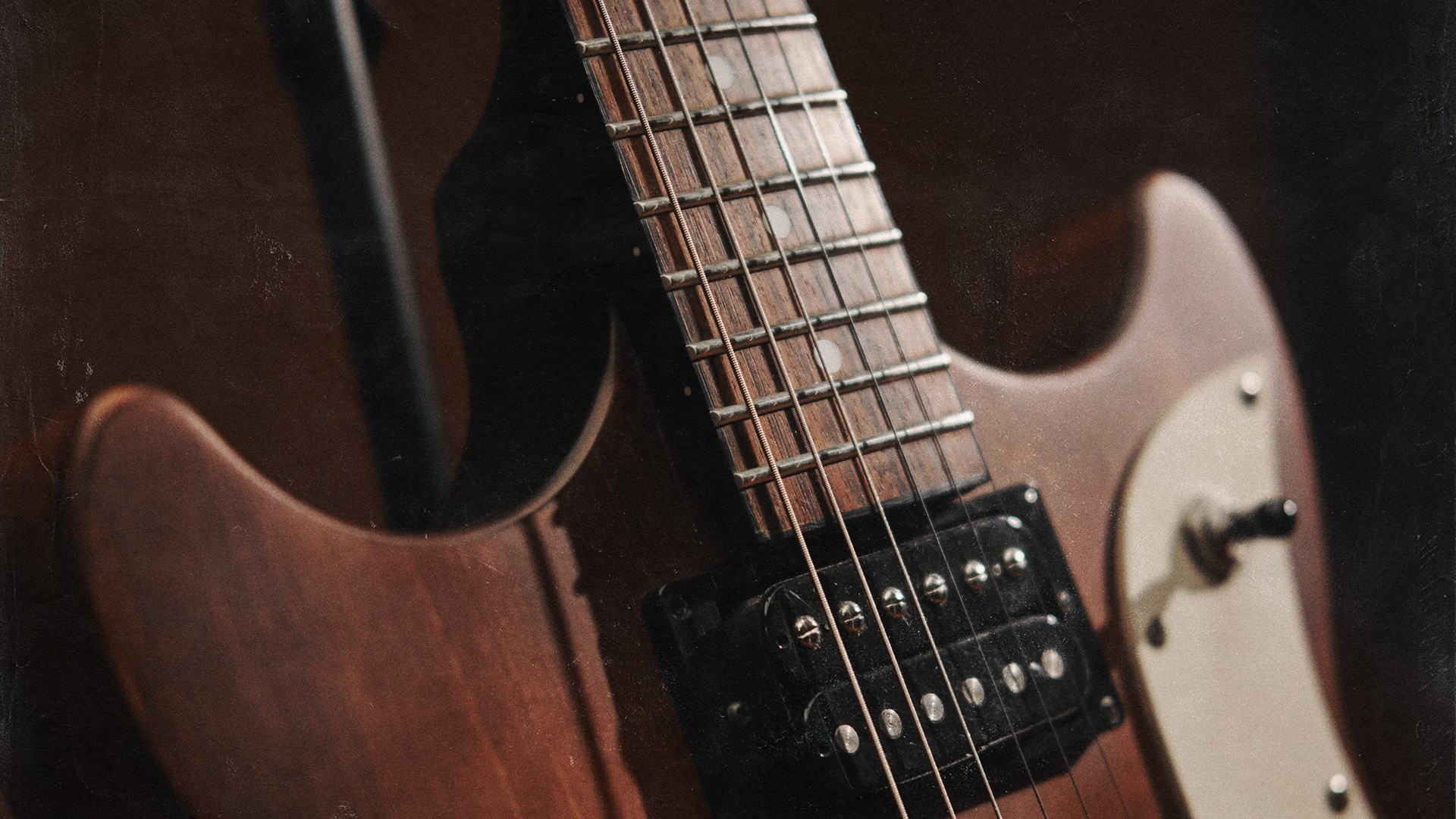
Guitar Licks Explained: 5 Iconic Licks to Inspire New Guitar Ideas

Every guitarist knows how good it feels to plug into a hot tube amplifier and wail guitar licks late into the night.
Whether you’re a producer or an instrumentalist, you’re probably wondering how you can use an iconic guitar lick in your own creation.
Music is a language and on guitar, licks are like sentences that form ideas.
Learning how licks work and what they consist of will help you write and arrange licks of your own into your music.
So, let’s dive in and explore everything you need to know about guitar licks.
What is a guitar lick?
A guitar lick is a short phrase of notes played on guitar that appears, usually one or two times in a song, often as a unique motif that’s intended to embellish rhythmic and melodic ideas or fill out a solo.
Guitar licks could be compared to a turn of phrase in English or a question that’s intended to elicit an answer from the surrounding arrangement.
They’re essentially short ideas that communicate something that the surrounding musical arrangement either responds to or complements.
Guitar lick history
Blues guitar playing was taught by passing on ideas built around the classic 1-4-5 blues chord progression. When playing the blues, players would learn certain musical phrases that fit the chord progression.
If a player came up with a good idea, the lick would be played and elaborated on by other players in the blues group.
Over time, some phrases became fairly common and ultimately became popular guitar licks that most guitarists learned when learning to play.
Playstyle also is a major component of how a guitar lick sounds.
A lick played by the blues great B.B. King might sound completely different from the exact same lick played by John Lennon—due to their countless stylistic differences.
So, aside from their technical requirements, learning to use licks leans heavily on learning what you want your sound and playstyle to be.
Guitar licks vs. guitar solos
Guitar licks are different from guitar solos because they’re generally shorter and are less improvised—rather they’re a phrase of notes known to guitar players.
A guitar solo is typically longer and may contain a selection of licks—many soloists are known for how they string together various licks into an improvised piece.
What’s the difference between a guitar lick and guitar riff?
The main difference between riffs and licks is that a guitar riff usually will repeat itself throughout a song, forming a central motif.
Riffs also are more likely to follow and often determine a song’s chord progression.
They also typically match and play to the melodies, rhythms and chords played by the other parts of a song’s arrangement and vice versa.
Licks, being short in nature, won’t have enough rhythmic energy to carry or push a song forward.
They also don’t usually determine a song’s chord progression, rather they’re something that songwriters and producers fit into one that’s already established.

How to write a guitar lick
Because guitar licks are rooted in the blues tradition of guitar playing, many licks revolve around the major pentatonic, minor pentatonic and blues scales.
You’ll find runs up and down the minor pentatonic scale, bends that play on the “blue notes” of the blues scale and runs that play on interchanges between minor and major pentatonic scales.
The use of third, sixth and ninth intervals is also a common feature of many licks.
Guitar lick examples
Maybe the most infamous lick in music is the aptly titled lick “the lick”.
It’s been used across countless genres and ultimately caught the eye of Jazz memesters who compiled its prolific usage.
All jokes aside, there couldn’t be a better example of a guitar lick than “the lick”—it’s a short pattern of notes that embellishes a section of a chord progression.
Yet, it’s not enough to compose a melody or form a repeating guitar riff.

The Lick achieved meme status after a group of Jazz students discovered how often musicians use it.
5 Legendary Guitar Licks and Why They’re so Great
Now that you know a little bit about the building blocks of guitar licks, let’s take a look at a few inspiring ones from a handful of legendary artists.
1. Rumble – Link Wray

Check out how fiery this lick is in this live performance from Wray
Making appearances in a handful of movies, including Quentin Tarantino’s Kill Bill, this beloved 60s track has a simple guitar part with a classic lick.
The guitar lick comes at the end of the chord progression and essentially is a descending minor pentatonic scale.
You really can’t get much simpler than that, and yet the song has an incredibly interesting, dry texture.
It’s thought of being a precursor to punk music given its chunky chords, overdriven tone and of course its outrageously simple but catchy lick.
2. Baby You Can Drive My Car – The Beatles

Here’s an example of how artists use licks to introduce musical ideas into their songs.
In Baby You Can Drive My Car, the Beatles kick the song off with a deceptively complex lick that’s only played once before dropping into the main song.
3. Rainy Night in Georgia – Brook Benton

Dupree just cannot be stopped in this legendary tune.
Here’s an incredibly lick heavy tune with some gorgeous and ornate guitar playing by Cornell Dupree.
An absolute master class in soulful, blues lick guitar playing—Dupree puts 3rd, 6th and 9th intervals, hammers and more to use throughout the song.
4. August 10 – Khruangbin

Modern psychrock trio, Krhuangbin, give a masterclass in lick infused playing.
In this modern track from psychedelic rockers Kruangbin you get to see how riffs and licks often interplay with each other.
The track has a main riff, but the guitarist is constantly adding flourishes and embellishments to add to the main melody.
5. Black Magic Woman – Santana

Santana was a master of the guitar lick, no doubt about that.
Possibly the king of licks, Santana ideates and expresses with seemingly endless licks in the opening section of the song—and throughout much of the track.
Listen to all the interesting bends, hammer-ons and the seamless way Santana moves through the minor pentatonic scale.
Use licks in your music
Licks are meant to add interest, embellishment and flourish to a song—sure the rhythms, chords and riffs are the backbone of the song, but often it’s the lick that makes an instrumental interesting.
So if you’re a music producer you should definitely think about how you can use licks in your music.
The good news is you don’t necessarily have a ton of guitar playing skill—if you know what you’re looking for guitar loop and guitar VSTs can help you find and write what you’re looking for.
LANDR Guitar, for example, is a plugin that makes it super easy to browse licks of all genres and styles to easily add into your track.
So if you’re not ready to pick up a guitar and start learning to write your own licks, definitely give LANDR Guitar a try and put some killer licks into your tracks.
Gear guides, tips, tutorials, inspiration and more—delivered weekly.
Keep up with the LANDR Blog.






